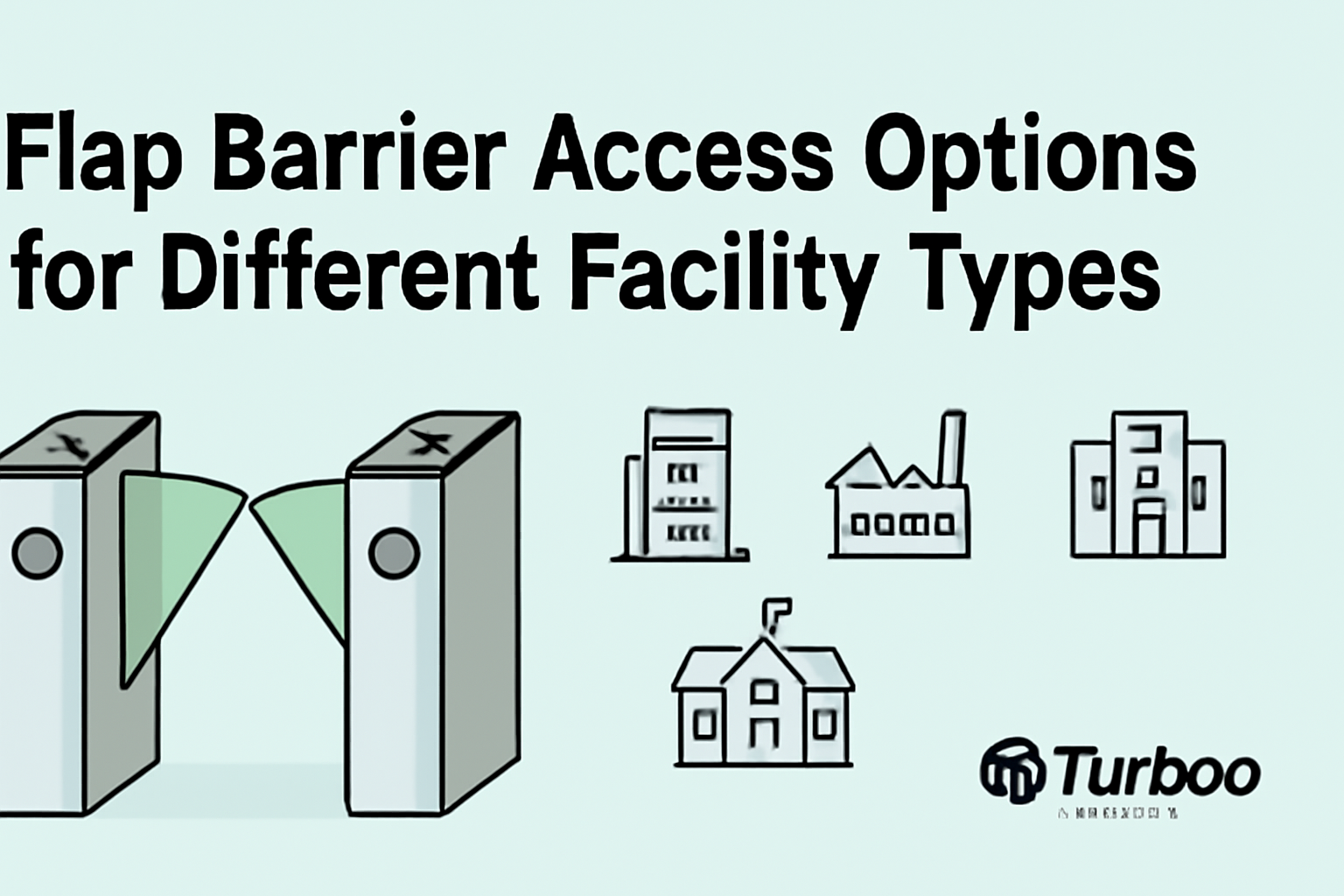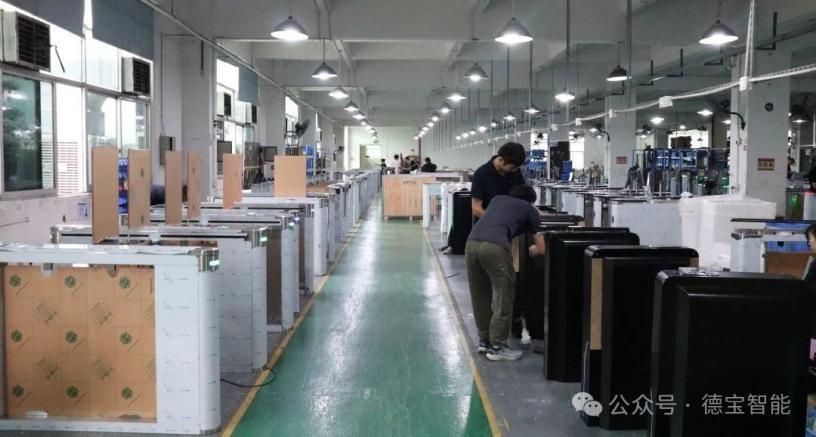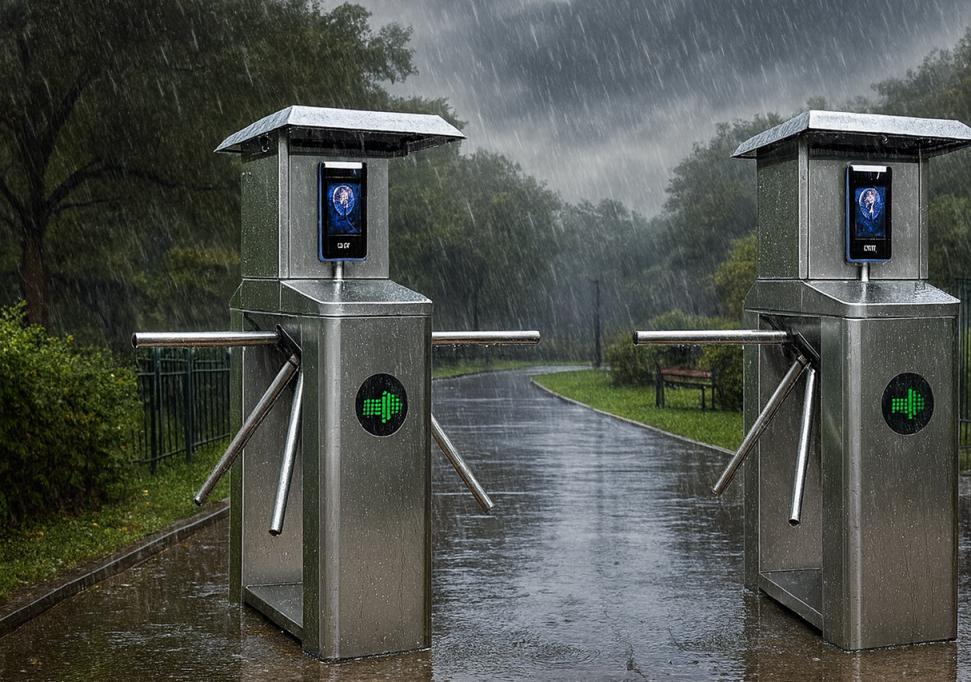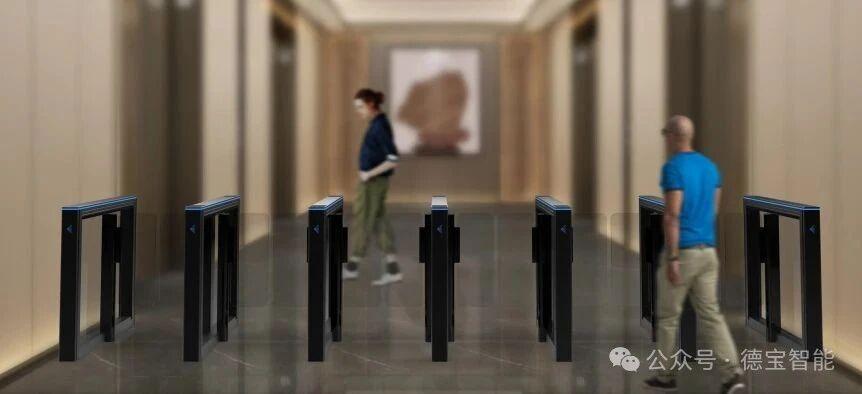Flap Barrier Access Options for Different Facility Types


Controlling entry into your facility is not just about security—it’s about efficiency, compliance, and ease of use. Selecting the right flap barrier access option plays a vital role in achieving all of these goals. Each facility has different needs. Offices prioritize smooth entry for employees. Hospitals need contactless and safe access. Schools look for budget-friendly control, while factories require rugged and fast systems.
A one-size-fits-all approach doesn’t work when it comes to access. What works for a school may fail in a high-security lab. That’s why this guide looks at different access control options for flap barriers and matches them to the right facility types.
Whether you’re dealing with biometric entry, mobile credentials, or simple RFID cards, understanding which option suits your environment can improve both security and flow. Let’s explore the strengths and fit of each option—so your access system works the way it should.
Understanding Flap Barrier Access Options
What Are Access Methods?
Flap barrier access methods refer to the technology used to verify and authorize someone to pass through the gate. These can include cards, fingerprints, facial recognition, mobile apps, or even PIN codes. Each of these methods has its own strengths and limitations.
Access methods connect directly to your flap barrier’s control system. They tell the barrier who is authorized and when. Without the right method in place, your barrier becomes either too open to threats or too rigid for real use.
Facility access methods are chosen based on who uses the building, how often, and how secure each entry point must be. The more critical the area, the more advanced the access control.
Why Access Options Vary by Facility Type
Not every facility handles access in the same way. An office building may want to make entry quick and seamless, while a government building might require dual-layered security. A school may need a low-cost solution that works with student IDs, and a factory might prioritize speed during shift changes.
These differences shape which flap barrier access options are most effective. Choosing the wrong option can slow down operations, frustrate users, or expose your system to risk.
That’s why understanding the environment, the users, and the operational needs is key to making the right access decision.
Key Access Control Options for Flap Barriers
RFID Card Readers
RFID cards are one of the most widely used facility access methods. They offer quick and reliable access without physical contact. Users tap or swipe their card at the barrier’s reader, and if credentials match, entry is allowed.
This option is favored for its simplicity and low cost. Cards can be easily issued, replaced, and customized with levels of access.
However, RFID cards are not without risks. They can be lost, borrowed, or cloned. That’s why they’re often combined with another method in sensitive areas.
RFID access is suitable for many environments but works best in controlled spaces like offices, schools, or residential buildings.
Biometric Scanners
Biometric systems use unique personal identifiers—like fingerprints, facial recognition, or iris scans—to control access. They provide a high level of security because they cannot be shared or lost.
These are ideal for places where tight control is needed, such as laboratories, data centers, or government buildings. They also reduce card management overhead.
However, they can be expensive and may face delays in high-traffic situations. Also, hygiene is a concern with touch-based systems, especially in healthcare environments.
Biometric access is a powerful option when accuracy and identity assurance are more important than speed.
Mobile Phone Access
Mobile credentials are gaining popularity, especially in tech-forward office environments. Users access the barrier through a smartphone app, Bluetooth, or QR code.
This method is contactless, flexible, and often integrates with employee management systems. It’s perfect for remote onboarding or temporary access for guests.
Mobile access works best in environments where users are tech-savvy and infrastructure supports strong Wi-Fi or Bluetooth coverage.
Security is strong, but it depends on user phone security and app permissions. When done right, it offers high convenience and decent protection.
PIN Code Entry
PIN pads offer a basic but effective access method. Users enter a code to unlock the barrier. This is often used in conjunction with cards for dual verification.
PIN access is suitable for environments where issuing cards is impractical or costly. It’s useful for factories, warehouses, or facilities with rotating staff.
However, it has security limitations. PINs can be shared or observed, and pads can wear out with frequent use. Still, when used with other systems, PIN codes offer affordable and effective access control.
Office Buildings and Commercial Spaces
Balancing Convenience and Security
In an office setting, convenience often takes the lead. Employees need to get in quickly without holding up lines or causing frustration. At the same time, unauthorized access must be prevented.
RFID cards remain popular here, especially when integrated with employee badges. They’re easy to manage and can be programmed for different areas or time-based access.
Supporting High Turnover and Visitor Access
Office buildings often welcome guests, contractors, or part-time workers. That means your flap barrier system needs to accommodate temporary credentials.
Mobile access and QR codes are great solutions. These can be issued remotely and expire after use. They support both flexibility and traceability.
PINs can be used for short-term visitor kiosks, but they’re better paired with another access method for enhanced control.
Using Mobile Access for Flexibility
Mobile apps offer unmatched ease. Employees can gain access through their phone—eliminating the need for extra badges. Apps also allow you to adjust access permissions instantly.
This method aligns with hybrid work models, where employees may not be in the building every day. Mobile access brings the facility in sync with modern work habits.
In an office environment, combining card access for employees and mobile options for guests creates a versatile and secure system that suits daily operations.
Hospitals and Medical Facilities
Secure Yet Contactless Entry Methods
Hospitals have unique access control needs. Security is critical, but so is hygiene. Staff, patients, and emergency personnel need safe and fast access—without unnecessary physical contact.
Biometric scanners with facial recognition or mobile-based entry are ideal in this setting. These provide high-level security while avoiding touch-based access. In pandemic-sensitive areas like isolation wards or surgical zones, touchless access prevents contamination.
Card access is still used, especially for quick entry to staff-only zones. However, these cards must be securely managed to prevent unauthorized sharing. Access credentials can be encoded by department or role, allowing quick movement while maintaining proper restrictions.
Managing Multi-Level Staff Access
Hospitals are layered environments. Doctors, nurses, janitorial teams, and admin staff all require different levels of access. One-size access methods can’t manage this complexity efficiently.
The best approach is to integrate access features with hospital management software. That allows real-time access updates as staff roles change. Biometric and card access combinations work well for managing these permissions.
Departments with sensitive equipment or medications may also benefit from dual-factor authentication—like a card and a PIN or facial recognition plus fingerprint—for added control.
Emergency Access and Monitoring
Hospitals need emergency override features. In a crisis, barriers should open instantly. Some systems are linked to fire alarms or medical alerts, triggering auto-open modes.
Access methods must also support round-the-clock operation. Monitoring who enters what zone and when is critical for compliance and safety. Biometric access methods enable accurate log tracking for audits or incident investigation.
In healthcare environments, balancing high-security features with smooth flow and hygiene makes flap barrier access options a key part of hospital design.
Educational Institutions
Simplifying Access for Students and Staff
Schools and universities handle high volumes of students across various facilities—labs, dormitories, gyms, and libraries. Flap barriers can help control these access points, but the method must be simple and budget-friendly.
Card readers are the most common solution. Student ID cards can double as access credentials, meal cards, and library IDs. These systems are easy to manage and cost-effective.
However, as campuses grow more digital, some are moving toward mobile access. Smartphone credentials let students enter dorms or class buildings without carrying extra cards. They also reduce administrative overhead during admissions and departures.
Combining Card and PIN for Control
For extra security in specific zones—like labs, server rooms, or examination halls—combining card access with a PIN adds an extra layer of control. This prevents unauthorized access if a card is lost or shared.
PINs can be easily reset at the start of each term. Multi-factor access systems are especially helpful in exam security, where only select staff are allowed inside test centers.
Flap barriers configured for both access methods can handle both general traffic and restricted areas efficiently.
Addressing Campus Security with Custom Access Functions
Campuses are often open environments, making access control a challenge. That’s where custom access functions make a difference.
Features like anti-tailgating, automatic entry logging, or user-specific scheduling help manage access more tightly. Emergency lockdown features allow fast closure of certain buildings or gates.
Educational institutions benefit from flexible systems that adjust access methods based on user role, time of day, or specific events.
Industrial Sites and Factories
Tough Environments Need Reliable Access
Factories and industrial sites require rugged flap barrier systems. Conditions can be dirty, wet, or noisy. Access methods must withstand this stress.
Card access works well because it avoids touchscreens or delicate components. Cards are durable and easy to scan—even in gloves. Weatherproof card readers with sealed flaps ensure continued operation.
In more controlled environments, mobile access may be used for supervisors or engineering staff who manage site visits or inspections.
Using PIN and Card Readers for Shift Work
Many factories operate in shifts. PIN codes combined with cards allow access control that matches work schedules. Staff can clock in using a card, then verify their identity with a PIN for entry.
This also helps in time tracking, ensuring accurate labor records. It prevents buddy punching and ensures that only authorized personnel are inside restricted zones.
PINs also reduce card clutter, which is helpful when managing large, rotating teams or temporary workers.
Integrating Safety Protocols with Entry Systems
Factories often need to ensure staff have completed safety checks or training before entering dangerous zones. Access control systems can be integrated with training databases to grant or deny entry based on compliance.
Biometric access may also be used in high-security labs or areas with hazardous material. This ensures identity-based entry and reduces the risk of human error.
In industrial environments, reliability, accountability, and integration with safety systems define the best flap barrier access options.
Public Venues and Transport Hubs
Handling High Volume of Users Efficiently
Public spaces like stadiums, subway stations, and airports must process thousands of entries per hour. Speed and accuracy are everything.
Flap barrier access options in these environments often include QR scanners and NFC readers. These handle ticket scans, mobile passes, and even contactless payments.
The goal is rapid verification without compromising security. Visual displays and auditory cues help guide users and prevent confusion during entry.
QR and Mobile Ticketing Integration
More public venues are turning to digital ticketing. QR codes sent to a mobile phone act as time-based credentials. These are ideal for one-time use and reduce the risk of counterfeit or stolen tickets.
Mobile app integration also allows real-time validation against databases, syncing with seat reservations or entry limits.
Flap barriers with built-in scanners streamline this process, speeding up queues and reducing the need for manual checks.
Real-Time Monitoring for Security Incidents
In high-traffic zones, monitoring who enters and exits can be essential for safety. Access control systems in public areas often sync with surveillance, alarms, and emergency systems.
Any anomaly—like forced entry or repeated access denial—can trigger alerts to nearby staff or central command centers.
In these environments, speed, automation, and data collection define the most effective flap barrier access methods.
Comparing Strengths and Limitations of Each Method
Security Features and Risk Factors
Each access method offers different levels of security. Biometric access stands out for its precision. It identifies users based on physical traits, making it difficult to fake or share. This makes it suitable for areas that need the highest level of security.
Card readers, while widely used, carry risks. Cards can be lost or cloned. They rely heavily on proper user management to ensure control. PIN codes are affordable but easy to share or observe, especially if users aren’t trained to protect their credentials.
Mobile access blends convenience with good security. But it depends on the user’s phone security. If a phone is unlocked or an app lacks proper authentication, access could be compromised.
When deciding between flap barrier access options, consider both the technical strength of each method and the habits of your users.
Cost and Maintenance
PIN codes and card readers are generally the most cost-effective to install and maintain. They use simple hardware and don’t require high computing power. This makes them perfect for schools, small offices, or temporary sites.
Biometric systems cost more. They require powerful processors, enrollment software, and ongoing updates. But they reduce the need for card issuance and improve long-term tracking.
Mobile access falls somewhere in between. Costs depend on whether you develop your own app or use a subscription-based access platform. Maintenance is generally low, but your IT team must manage device registration and data security.
In short, upfront costs vary, but so do the long-term expenses tied to each access method.
Ease of Use and Scalability
Ease of use is essential in environments with high foot traffic. Card readers and mobile access offer fast throughput and easy training. Users typically adapt quickly with minimal support.
Biometric systems take longer per scan. That’s fine in low-traffic or high-security zones but can cause delays in public or peak-time use. PIN pads are simple but prone to user error and forgotten codes.
When scaling across a large organization or multiple facilities, mobile and card access provide the easiest expansion. New users can be onboarded remotely and given access almost instantly.
Each method must match not only the current facility needs but also future plans for growth.
Factors That Influence Access Method Selection
User Volume and Frequency
How many users pass through the barrier each day? In busy transit hubs, systems need to support thousands of entries per hour. That rules out slower options like fingerprint scanning unless they’re used selectively.
For buildings with smaller teams or controlled entry schedules, more detailed methods like PIN or facial recognition can be applied without disrupting flow.
Frequency matters too. A biometric system may be ideal for occasional lab access but inefficient for hourly employee clock-ins. Match the speed of the method to the pace of the facility.
Required Security Level
Security needs vary. In corporate buildings, basic access is fine for the lobby, but server rooms need stricter control. Factories may want to track who’s on shift, while hospitals must protect restricted medical areas.
Combine access methods when needed. Biometric for sensitive areas, card for general access. This layered approach balances cost and security effectively.
Evaluate risk exposure, compliance rules, and asset sensitivity when selecting your flap barrier access option.
Budget and Infrastructure Readiness
Not every facility can afford high-end access features immediately. Budget limits often dictate the level of technology used. Fortunately, most flap barriers support modular upgrades.
Start with card access. Add mobile or biometric later. Choose a system that allows this scalability without full replacement.
Infrastructure matters too. If your network can’t support cloud-based access, then biometric or mobile systems may lag. Evaluate your current setup before committing to advanced access methods.
Customization for Specific Facility Needs
Aligning Access Options with Layout and Flow
Every building has its own layout. Tight corners, narrow corridors, or open lobbies all impact access system performance. That’s where customization plays a key role.
For example, a university might need extra-wide gates for equipment transport. A hospital may need anti-microbial casings and silent operation. Each need influences the best access method.
You can place biometric scanners at different heights, add visual or audio cues, or change the angle of the scanner to suit space constraints. Smart customization ensures your access method is usable and effective.
Customization Options that Make Integration Easier
Custom access panels, reader placement, and software interfaces help integrate your flap barrier into existing infrastructure. For example, you can connect with third-party HR or visitor management systems for seamless onboarding.
Custom access features allow for schedule-based permissions, multilingual instructions, or integration with turnstile counters. These make operation smooth and scalable.
Choosing access methods becomes easier when the system adapts to your workflow rather than the other way around.
Understanding Flap Barrier Functions
Overview of Flap Barrier Functions
Flap barriers aren’t just gates. They’re intelligent systems with built-in functions like tailgate detection, anti-passback, timed unlock, and real-time alerts.
Your chosen access method needs to support these functions. For example, a biometric system might lock out duplicate scans. A card reader may use anti-passback to prevent someone from re-entering immediately.
These functions improve safety, user tracking, and policy enforcement. They’re often linked to the access method directly. That’s why your choice of access must align with your overall security logic.
How Functions Support Different Access Types
Tailgating alerts pair well with facial recognition or card scans. Visitor logs tie easily to mobile access. Emergency override features work best when all systems are centralized.
The access method chosen must work with the software logic built into the flap barrier. This ensures that all functions perform as intended.
Think of functions as the software side of security. Your access hardware must speak the same language.
Buying a Flap Barrier with the Right Access Control
Using a Buying Guide
Choosing a flap barrier isn’t just about price. Use a reliable buying guide to compare models, evaluate features, and plan your integration.
A good guide outlines which access methods are supported, how systems can be upgraded, and what configurations work best for specific facility types.
Look for access compatibility, software integration, and customization support in the specs. Avoid systems that lock you into proprietary readers or software unless there’s a strong service guarantee.
Selecting a Vendor Based on Facility Type
Some vendors specialize in certain industries. For example, a vendor with experience in airports may offer better ticketing and scanner integrations. One focused on education may understand semester-based access needs.
Choose a provider who knows your sector. They’ll help you avoid mistakes, suggest best practices, and offer the right support tools.
Vendor selection is as critical as the access method. Pick one that offers flexible options, detailed documentation, and a responsive support team.
Industry Access Control Best Practices
Key Trends from Access Solutions
Major security firms like HID Global offer insights into access control trends. Mobile credentials, cloud-based access, and AI-enhanced monitoring are shaping the future of secure entry.
Best practices include using layered access methods, encrypting all credentials, and integrating access systems with broader facility management tools.
Follow these insights to ensure your access strategy remains modern, secure, and adaptable.
Lessons from Facility Guide Resources
Resources like the Security Info Watch site provide real-world examples of access projects, expert interviews, and case studies.
These guides help you avoid common pitfalls and align your flap barrier setup with industry trends. Whether it’s compliance, scalability, or usability, learning from others can help you build a more effective solution.
Conclusion
Flap barrier access options shape how your facility functions. Whether you manage a hospital, university, factory, or office, selecting the right access control method ensures smooth operation, strong security, and user satisfaction.
There’s no universal best choice—only the best fit for your environment. By understanding your needs, users, and infrastructure, you can build a system that works today and grows with you tomorrow.
Use this guide to compare, customize, and deploy the right access features—and unlock the full potential of your flap barrier system.
FAQs
1. Can I use multiple access methods on one flap barrier?
Yes, most modern barriers support dual or multi-authentication like card plus biometric or mobile plus PIN.
2. What is the most secure access option?
Biometric access provides the highest security because it uses physical traits that are hard to duplicate.
3. Are flap barrier systems customizable for different industries?
Absolutely. With proper customization, they can fit hospitals, schools, transit hubs, and more.
4. How do I manage mobile access in shared environments?
Use a centralized app or access platform that allows you to grant, revoke, and monitor user permissions remotely.
5. Is facial recognition suitable for high-traffic areas?
It can be if paired with fast processors and clear lighting. However, mobile or card access is typically faster for large crowds.












